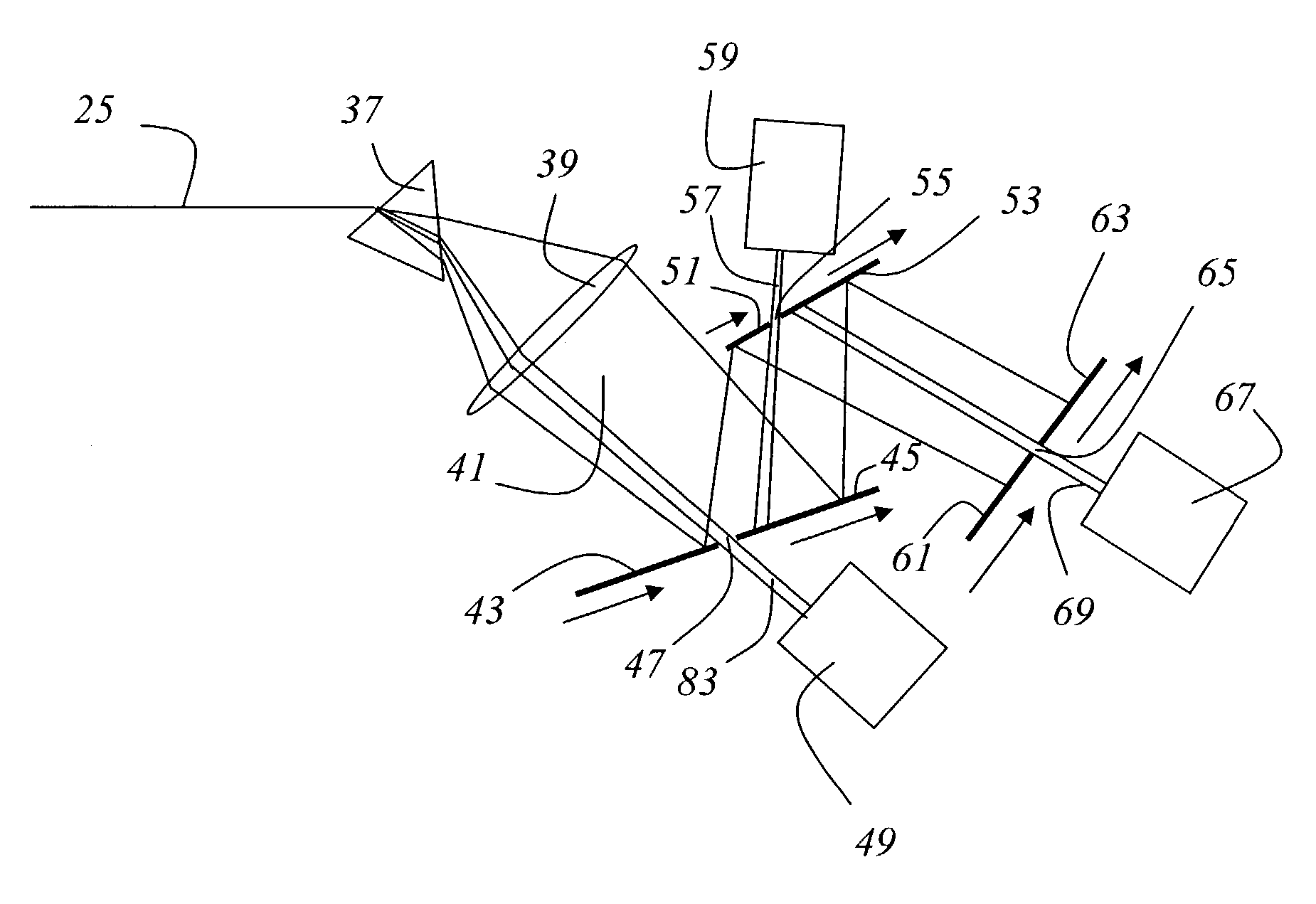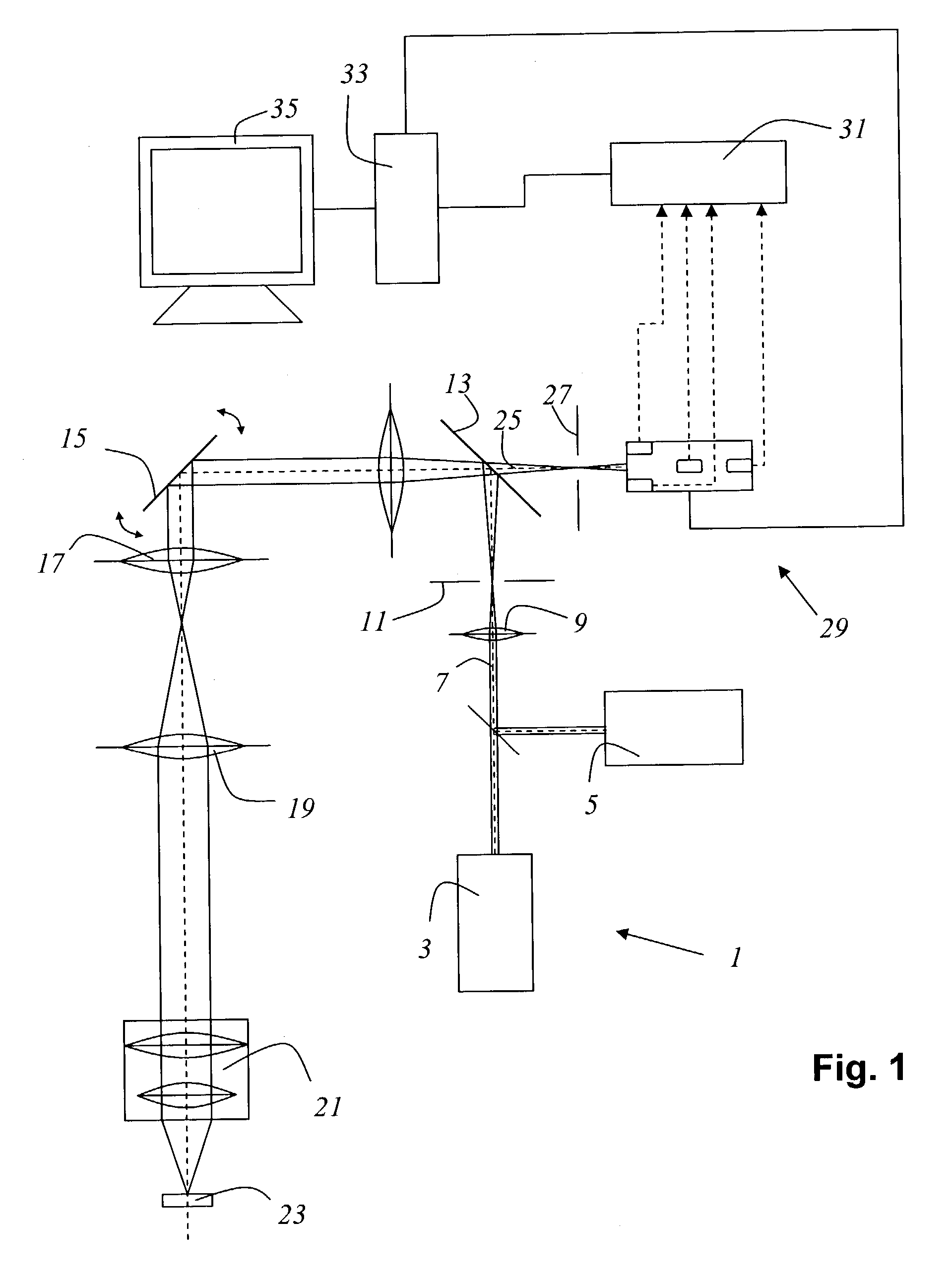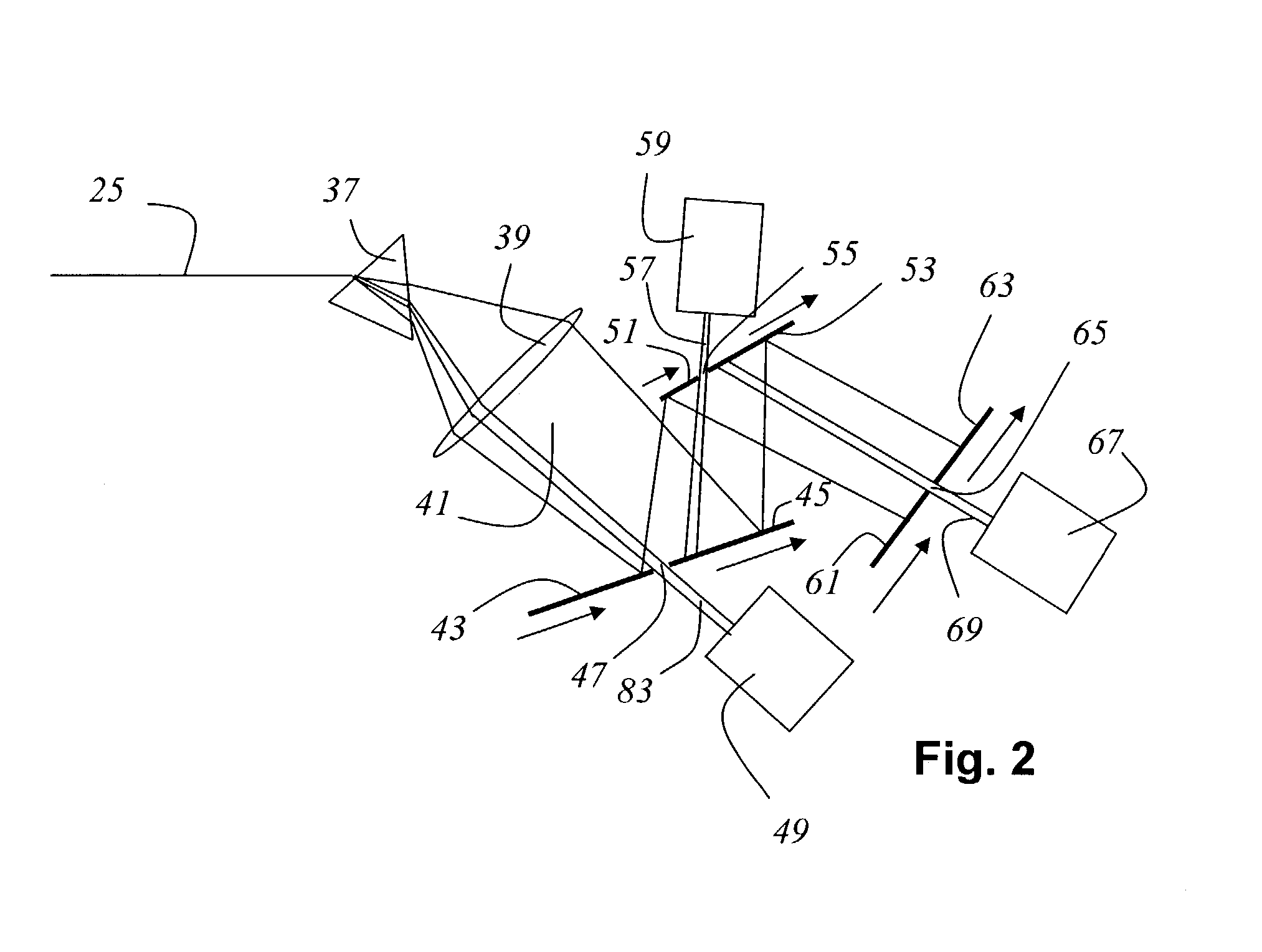Method for spectral analysis, and scanning microscope
a spectral analysis and scanning microscope technology, applied in the field of spectral analysis and scanning microscope, can solve the problems of insufficient sensitivity of downstream line detectors, insufficient spectral resolution of apparatuses in which spectrometers are provided, and insufficient spectral resolution of apparatuses, etc., to achieve rapid and efficient spectral analysis, high spectral resolution, and good sensitivity dynamics
- Summary
- Abstract
- Description
- Claims
- Application Information
AI Technical Summary
Benefits of technology
Problems solved by technology
Method used
Image
Examples
Embodiment Construction
[0041]FIG. 1 schematically shows a scanning microscope according to the present invention that is embodied as a confocal scanning microscope. Illuminating light beam 7, from an illumination system 1 that comprises a first laser 3 and a second laser 5, contains four wavelengths. Illuminating light beam 7 is focused with the aid of optical system 9 onto the illumination pinhole. Illuminating light beam 7 travels via a beam splitter 13 to the gimbal-mounted scanning mirror 15, which guides illuminating light beam 7, through scanning optical system 17, tube optical system 19, and objective 21, over or through specimen 23. With non-transparent specimens 23, illuminating light beam 7 is guided over the specimen surface. With biological specimens 23 (preparations) or transparent specimens, illuminating light beam 7 can also be guided through specimen 23. This means that different focal planes of the specimen can be successively scanned by illuminating light beam 7. Subsequent assembly then...
PUM
| Property | Measurement | Unit |
|---|---|---|
| wavelength | aaaaa | aaaaa |
| wavelength | aaaaa | aaaaa |
| wavelength | aaaaa | aaaaa |
Abstract
Description
Claims
Application Information
 Login to View More
Login to View More - R&D
- Intellectual Property
- Life Sciences
- Materials
- Tech Scout
- Unparalleled Data Quality
- Higher Quality Content
- 60% Fewer Hallucinations
Browse by: Latest US Patents, China's latest patents, Technical Efficacy Thesaurus, Application Domain, Technology Topic, Popular Technical Reports.
© 2025 PatSnap. All rights reserved.Legal|Privacy policy|Modern Slavery Act Transparency Statement|Sitemap|About US| Contact US: help@patsnap.com



